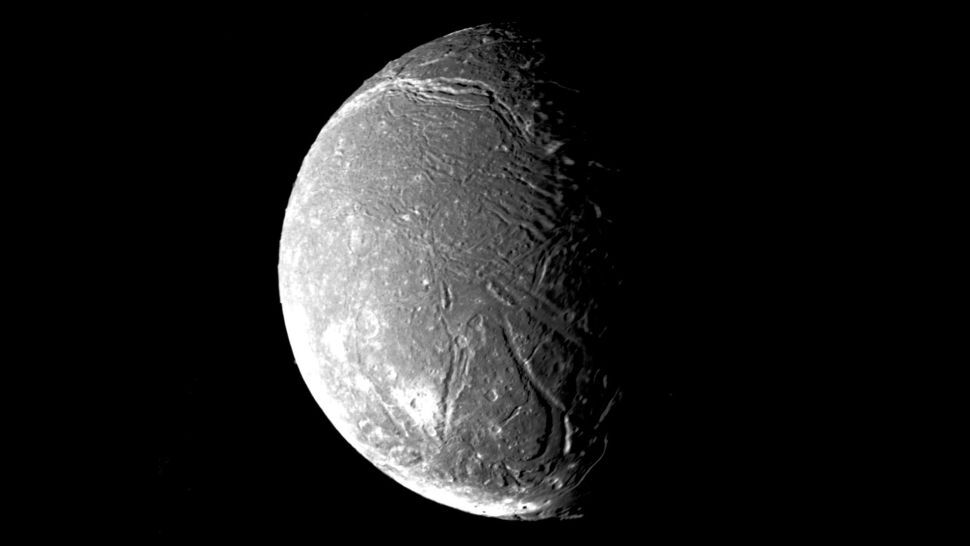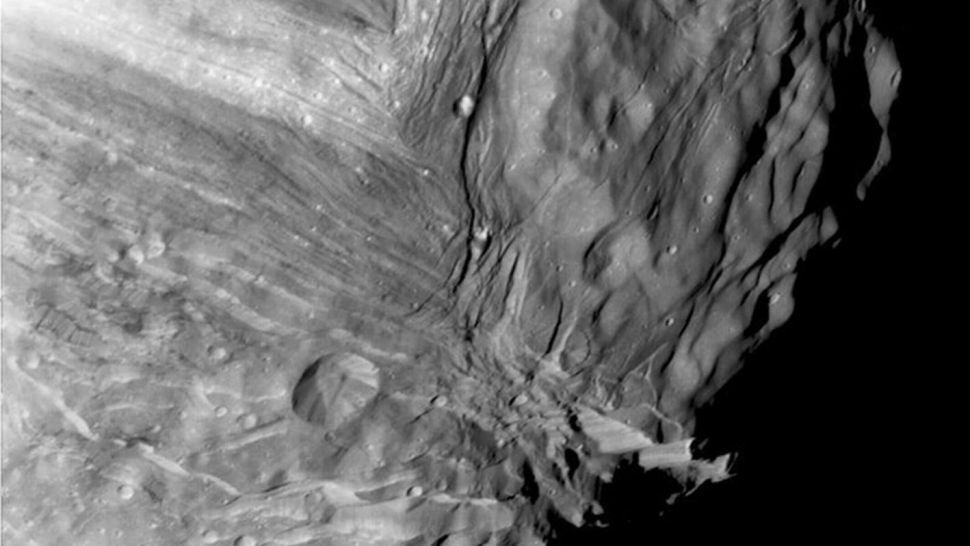29.10.2022

An image of Uranus' moon Ariel taken by Voyager 2 in 1986. (Image credit: NASA/JPL)
Uranus is a strange world, knocked on its side and with a lopsided magnetic field. Its moons may be even stranger.
Earlier this year, the U.S. National Academies of Sciences, Engineering and Medicine recommended that the next flagship mission in planetary science — one costing perhaps $4 billion — should go to Uranus, with launch targeting the 2030s. Such a mission would be the second to peer into the Uranian system, following only Voyager 2's 1986 flyby; it would be the first spacecraft to make an extended stay in the neighborhood. And while the ice giant's atmosphere and interior would be key priorities for the mission, there's more to the picture.
"In terms of the science questions that we can entertain with an orbiter and a probe at Uranus, this list is really long," Richard Cartwright, a planetary scientist at the SETI (Search for Extraterrestrial Intelligence) Institute in California, said during a presentation at the annual meeting of the American Astronomical Society's Division of Planetary Sciences held earlier this month. "And I'm just thinking about the moons — specifically, the five large ones."
All told, Uranus sports 27 known moons. Nearest the planet itself are the inner ring moons, which Cartwright noted are the most densely packed system of satellites in the solar system and may be exchanging material with the rings. Farthest away, all beyond 2.7 million miles (4.3 million kilometers) from Uranus, are the irregular moons, which orbit backward and may be captured asteroids, according to NASA.
"There are so many open questions about the origins of the irregular satellites," Cartwright said, noting that mission personnel could arrange for a spacecraft to fly past one as it approaches Uranus itself. "We don't know much about these guys."
But the five remaining moons, dubbed the classical moons, are where a spacecraft could really shine. These are the moons large enough that astronomers had spotted them from Earth by 1950.
Even the smallest and last-spotted of these moons, Miranda, which is about 310 miles (500 km) wide, embodies the mysteries surrounding the Uranian moons. "Miranda's really weird," Cartwright said.

An image of Uranus' moon Miranda taken by Voyager 2 in 1986. (Image credit: NASA/JPL)
Images from Voyager 2's flyby show geological features that are difficult to decipher, he noted. Miranda sports canyons 12 times as deep as Earth's Grand Canyon, according to NASA, and the moon's surface is unusually thick. Miranda harbors three large "corona" regions that are unlike anything else scientists have seen, and it may boast volcanos that erupt slushy ice "lava."
"There's craters that look like they've been filled in by something, and then craters that don't look like they've been filled in with something, and in many cases, these craters are right next to each other," Cartwright said. "So, something really interesting happened in Miranda's geologic past, maybe multiple times."
Miranda may be the strangest of the classical moons, but it's in good company.
Ariel seems to have the freshest surfaces of the five classical moons. Umbriel has the oldest and darkest. Umbriel and the two largest, Titania and Oberon, Voyager 2 barely glimpsed, but all four of the largest moons might have oceans buried below their icy crusts, perhaps even spitting plumes of water out into space.
"Clearly, we need better coverage of these moons," Cartwright said, pointing in particular to their northern hemispheres, which Voyager 2 wasn't able to see at all. In addition, Voyager 2 saw only a snapshot, one taken while the southern hemisphere was in spring.
Much of the work Cartwright envisions at these worlds could be done with the instruments a Uranus orbiter would carry regardless, like its cameras. But he also encouraged mission planners to consider adding a dust analyzer that could identify compounds based on their weight as an instrument that would be particularly valuable in understanding Uranus' moons.
"We could actually collect material that gets ejected off the surfaces of these moons, dust grains, and then sweep it up with the dust analyzer and characterize the composition," he said.
There's still time to propose instruments for the spacecraft. NASA has said it could start early studies of what a mission could look like in the coming year. However, Cartwright encouraged scientists not to dawdle.
"It's important we start this mission as soon as possible so that we can get that Jupiter gravity assist window, hit that window between 2030 and 2034 so we can get to Uranus faster, before the system transitions back into southern spring in 2050," he said.
Quelle: SC
